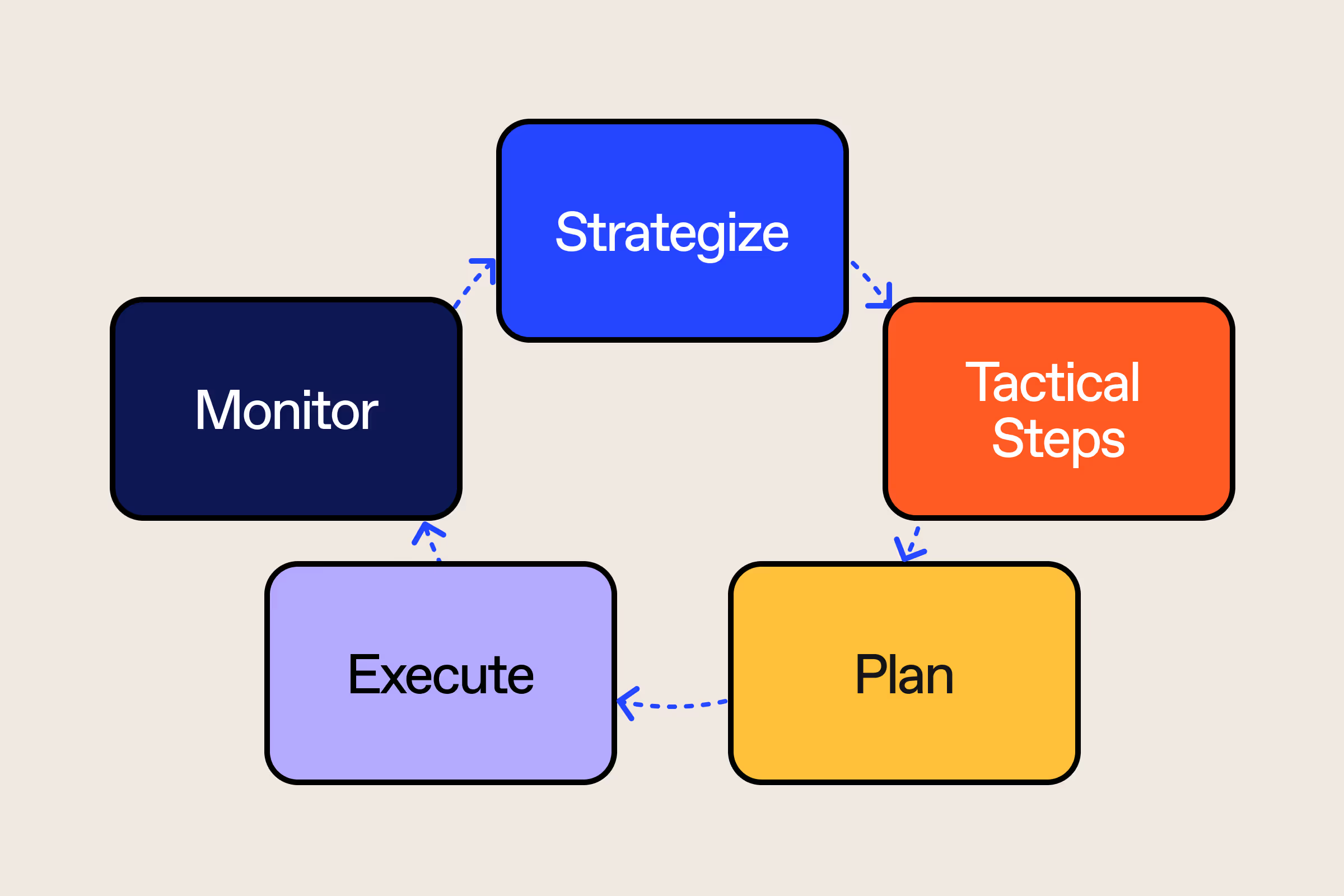Employee experience: Building a better workplace

Discover Workleap Officevibe's benchmark report on 12 key employee engagement metrics

Picture two people starting their first day at your company six months apart. One walks into a freshly standardized onboarding process, with clear feedback and real development opportunities.
But the other joined before onboarding was overhauled, and unclear expectations led to confusion and frustration. They’re looking for another position elsewhere. It’s the same role at the same company, but with radically different employee experiences.
The benefits of positive employee experience extend beyond just smooth onboarding and higher retention. It also drives better team alignment and productivity. Here’s how to create a supportive workplace with teams that are always ready and willing to succeed.
What is employee experience?
Any interaction between workers and employers, from onboarding to exit interviews, is part of the employee experience in the workplace. It tracks how people feel about and engage with the organization, including their work, managers, and interactions with HR leaders.
Establishing a strong employee experience requires more than ping-pong tables and free coffee. It’s built through organizational trust and daily interactions that help team members feel seen and supported.
HR might be responsible for monitoring the employee experience, but since that experience includes every stage of the employee lifecycle, improving it isn’t just an HR responsibility. Creating a connected workplace where your workforce thrives is a cross-departmental effort.
Why employee experience matters
According to Gallup, over half of employees are either watching for or actively seeking a new job. Capturing your employees’ attention and keeping them engaged is crucial for retention. By focusing on employee experience, you can build an environment where workers want to stay.
Investment in employee experience management is core to building an environment where teams can deliver consistent company-wide impact. Here are a few more benefits of a focus on employee experience.
Higher employee engagement
Teams that feel valued give more of themselves to their work. A good employee experience creates engaged employees who are motivated and invested in organizational success. This sense of purpose drives better collaboration and stronger working relationships.
Better productivity and performance
When employees enjoy coming to work, they’re more likely to try their best. In a Slack survey, 82% of workers reported that feeling happy and engaged at work was a key productivity driver. A positive work environment can dramatically impact a company’s ability to hit its short and long-term goals.
Improved retention and lower turnover
First impressions do matter, but consistency is key. Although a stress-free onboarding process is great for building trust with new employees, it's ongoing support that makes people want to stick around. Regular check-ins and consistent feedback shows employees that you’re invested in their future success at the company.
Stronger employer brand
Company culture shapes how people talk about your business, both inside and outside of the workplace. When employees feel supported, they become vocal and loyal brand advocates. Focus on building a strong employee experience to watch your reputation climb.
Better customer satisfaction
A positive employee experience doesn’t just stop with your team: Employee happiness is reflected in the customer experience. When teams enjoy their work, they go out of their way to go the extra mile for customers.
6 core components of employee experience
Building a better work environment requires more than just smooth onboarding and in-office perks. Here are the six core elements that shape the employee experience.
1. Culture and values
When organizational values feel real, teams gain a sense of belonging and shared purpose. Consider shaping company values around respect, fair compensation, and support. It’ll foster a healthy culture, and teams that care about more than just showing up.
2. Leadership and communication
For better or for worse, managers and HR leaders set the tone at work. When leadership communicates openly, shares feedback, answers questions, and delivers on promises, it drives trust and helps employees feel heard.
3. Employee recognition and feedback
Hard work deserves to be recognized. Offering frequent, personalized employee recognition and feedback is a great way to demonstrate appreciation.
According to Gallup, employees are 3.6 times more likely to be motivated to do great work when their manager offers daily feedback. With Workleap Officevibe, managers can easily access insights to celebrate wins and keep employee engagement in motion every day.
4. Growth and development
Workplaces can feel stifling if there’s no room to grow. Offering development opportunities and the chance for upward mobility gives workers something to strive for. This can be anything from online courses to improve their skills to clear paths toward promotions.
5. Tools and technology
Slow office computers and outdated software cause friction and frustration. Investing in the right tech helps your workforce move faster and perform better. A quick, advanced technology stack improves workflows and collaboration at every level of the org chart.
6. Work-life balance and flexibility
Exhausted employees can’t do their best work. Flexible schedules, mental and physical health benefits, and clear boundaries are important parts of a good employee experience. A work environment that respects work-life balance unlocks productivity, whether your team is in-office or scattered across the globe.
Employee experience strategy: Digital vs. physical
Employee experience best practices look different depending on where the work happens. In a physical workplace like an office, your company culture and in-person interactions contribute to how employees feel. But in a digital environment, tools, workflows, and virtual communication are everything.
Every click, notification, and login impacts employee engagement and productivity. When tools work seamlessly without hiccups, employees feel supported and cared for. But when tech repeatedly fails, frustration quickly festers, to the detriment of motivation. Monitor your tech stack to ensure everything’s up to date and running without issue to limit roadblocks.
Workleap Officevibe makes all the difference in digital environments. Pulse surveys, continuous feedback loops, and built-in recognition tools help you check in on how teams are feeling and design better digital employee experience strategies.
How to improve employee experience
Improving employee experience isn’t about one massive overhaul: It’s about intentional actions that gain momentum over time.
Collect feedback and act on it
If you’re guessing how your workforce feels, you’re already behind. Gather continuous employee feedback to spot issues before they spiral into turnover. Workleap Officevibe’s pulse surveys make this easy by offering real-time insights into what teams are doing.
Build a culture of employee recognition
Show public appreciation for your employees to boost team morale. With Officevibe’s Good Vibes wall, managers and peers see and react to wins in real time. Choose to celebrate together or send a private note thanking them for their efforts.
Train managers to support the team’s well-being
Interactions with leaders can radically impact employees’ experience. Support managers with tools to keep them informed and confident when engaging with their reports. Workleap Officevibe offers automated reports, one-on-one meeting templates, and insights so managers can lead with clarity and care.
Offer clear career development paths
Stalled growth leads to unhappy employees. Chances are, your workers want real, attainable development opportunities. Create them. Show employees there’s a route to advancement and retention, and performance will skyrocket.
Optimize your internal tools
Clunky tools and slow systems are the enemy of productivity and focus. Invest in tools that work and make sure they’re continually updated.
Workleap Officevibe integrates with the programs your team already uses, like Slack and Microsoft Teams, for a user-friendly experience.
Use personalized employee engagement efforts
Every worker is different, so one-size-fits-all employee engagement strategies just don’t work. To optimize efforts, focus on each team member individually, with bespoke plans designed to their strengths. Officevibe’s segmented insights and Workleap AI can give you the inside scoop on what drives each employee for better planning.
Build culture and employee experience with Workleap Officevibe
Excellent employee experience is an ongoing investment that drives retention, engagement, and better business outcomes. Get it right, and the workforce thrives. Get it wrong and you risk higher turnover.
With Workleap’s Officevibe platform, you can start where it matters most: understanding your people. Run pulse surveys to find out how employees really feel, and launch peer-to-peer recognition with the Good Vibes wall to celebrate wins. Officevibe’s continuous feedback loops make it simple to drive real change.
Officevibe helps you design meaningful, measurable experiences that engage employees, no matter your company structure. If you’re ready to build better employee experience, let’s get to work.
Give HR and managers the clarity, confidence, and connection to lead better every day.


%20(1).png)


.png)
.png)








